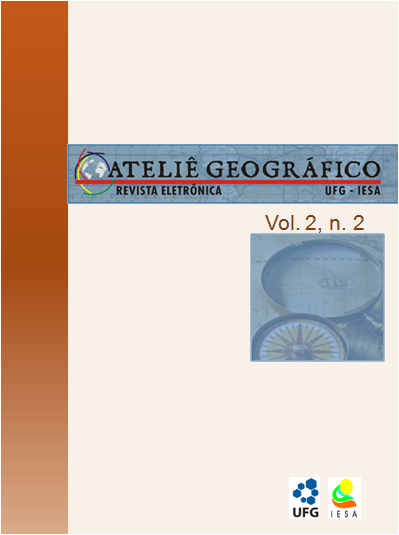TERRITORY, CULTURE AND NATURE IN NATIONAL SYMBOLS: THE SPATIAL REPRESENTATION IN FLAGS
DOI:
https://doi.org/10.5216/ag.v2i2.4709Abstract
Abstract The flag, together with the coat of arms and the national anthem are the three symbols through which an independent country proclaims your identity and sovereignty. In essence, they serve as “modern totems” – signs that bear a special relationship to the nations they represent, distinguishing them from one another and reaffirming their identity boundaries. They project cultural values associated to a political identity and the idea of belonging to a nationality, an imagined political community. In this article, I examine the flags among the present national symbols, where them show a great variety of significances that embrace the nature, the territory and the culture as references of the symbolic geographical spaces associated to each country around the world. I argue that flags demonstrate wide possibilities of interpretation in the scientific field, requesting larger studies that can narrow the relationships between the “geography and symbolic representations” as a new perspective of the analysis and decode the cultural ways of spatial representation. Key-Words: National Symbols, Nature, Territory, Culture.Downloads
Download data is not yet available.
Downloads
Published
2008-09-07
How to Cite
BERG, T. J. TERRITORY, CULTURE AND NATURE IN NATIONAL SYMBOLS: THE SPATIAL REPRESENTATION IN FLAGS. Ateliê Geográfico Journal, Goiânia, v. 2, n. 2, p. 88–102, 2008. DOI: 10.5216/ag.v2i2.4709. Disponível em: https://revistas.ufg.br/atelie/article/view/4709. Acesso em: 18 may. 2024.
Issue
Section
Articles
License
Autores que publicam nesta revista concordam com os seguintes termos:- Autores mantém os direitos autorais e concedem à revista o direito de primeira publicação, com o trabalho simultaneamente licenciado sob a Licença Creative Commons Attribution que permite o compartilhamento do trabalho com reconhecimento da autoria e publicação inicial nesta revista.
- Os autores não serão remunerados pela publicação de trabalhos na Revista Ateliê Geográfico. Além disso, os conteúdos publicados são de inteira e exclusiva responsabilidade de seus autores, ainda que reservado aos editores o direito de proceder a ajustes textuais e de adequação às normas da publicação.
- Autores têm permissão e são estimulados a divulgar seu trabalho online (ex.: em repositórios institucionais ou na sua página pessoal), já que isso pode gerar alterações produtivas, bem como aumentar o impacto e a citação do trabalho publicado (Veja O Efeito do Acesso Livre).


